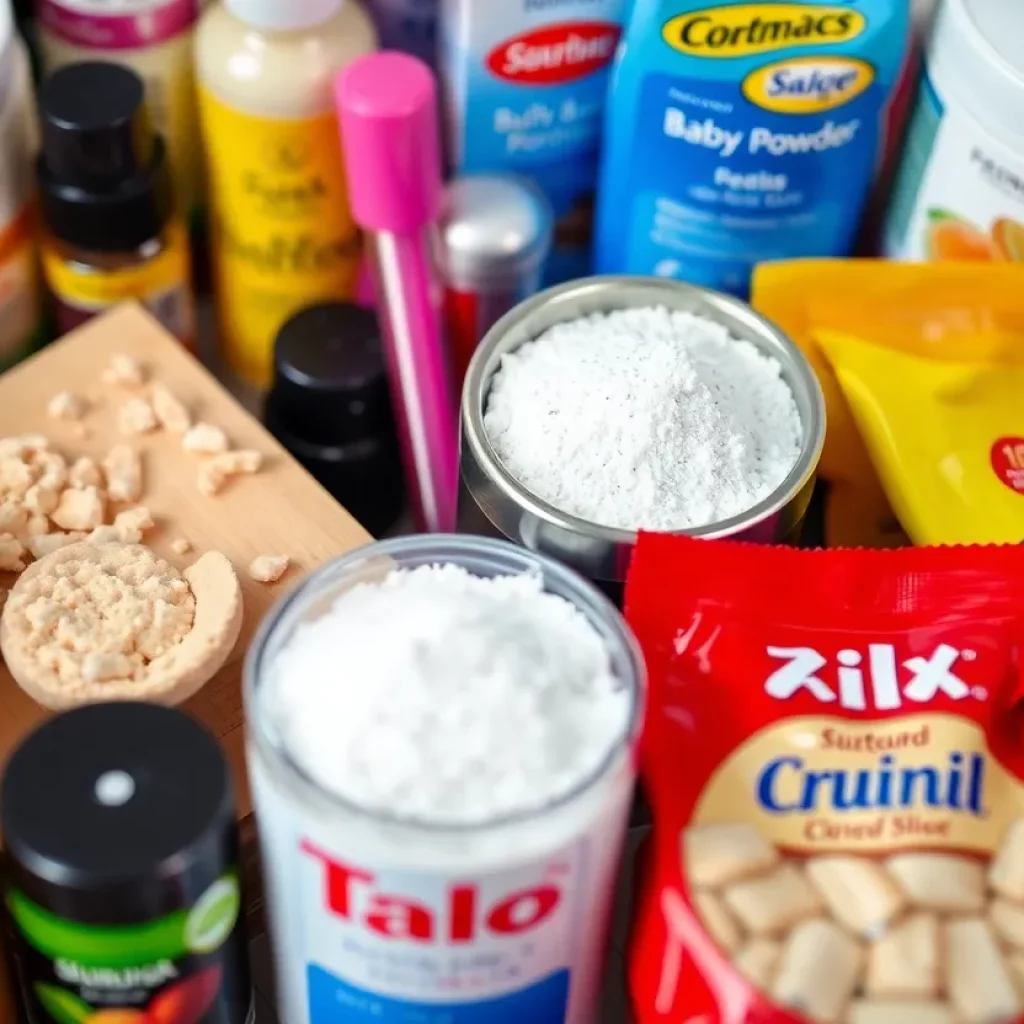News Summary
Concerns rise over the use of talc in consumer products as an FDA panel investigates its potential health risks. The infamous mineral, linked to serious health conditions, faces scrutiny for asbestos contamination and its carcinogenic nature. This has led to a wave of lawsuits against companies like Johnson & Johnson. Pediatricians warn of inhalation risks in infants using talc powder, while ongoing research questions the correlation between talc use and ovarian cancer. With growing awareness, a movement towards banning talc in consumer products emerges.
Concerns Rise Over Talc Use as FDA Panel Investigates Potential Health Risks
In a recent gathering of leading scientists and medical experts with officials from the U.S. Food and Drug Administration (FDA), the spotlight was put on the potential dangers associated with talc, a mineral widely utilized in various consumer products, including cosmetics, medications, and even food items. This has ignited growing public health concerns as the panel discussed issues that could resonate with many consumers.
The Talc Dilemma: Contamination Risks
Talc’s infamous reputation stems from the risk of asbestos contamination during mining processes. The substance is notorious for its association with serious health conditions like mesothelioma and ovarian cancer. However, experts shared that talc’s cancer risk could extend beyond mere contamination. Talc has the potential to incite long-term inflammation, which is increasingly recognized as a contributing factor to cancer development.
Everyday Products and Hidden Risks
Talc’s appeal lies in its unique properties, allowing companies to produce smooth textures and prevent clumping in a variety of consumer goods. From makeup to baby powder, talc is everywhere. Common medications like Lipitor, Synthroid, Prilosec, and Neurontin also contain this controversial ingredient.
What many consumers may not realize, however, is that talc also finds its way into food items, such as gum, candy, cheese, flour, and rice. Disturbingly, food labels do not require the disclosure of talc as an ingredient, keeping its presence hidden from consumers.
The Time for Action? FDA Panel Calls for Reevaluation
The FDA panel did not shy away from the implications of talc use, urging companies to consider halting its inclusion in products where safer alternatives exist. FDA officials emphasized their concerns regarding the substance’s long-acknowledged carcinogenic nature and highlighted the risks associated with talc in products aimed at children.
A Legal Storm Brewing
Tens of thousands of lawsuits against corporations such as Johnson & Johnson have emerged, linking their talc products to health issues like mesothelioma and ovarian cancer. Plaintiffs argue that these companies were aware of the asbestos contamination risks but chose to remain silent, further aggravating the situation. As a part of the ongoing legal fallout, Johnson & Johnson announced the discontinuation of talc-based baby powder in the U.S. and Canada.
Consulting Pediatric Concerns
Pediatricians have also raised alarms about the inhalation risks associated with talc-based baby powder for infants, warning that it could lead to serious respiratory issues. While the American Academy of Pediatrics has issued cautionary guidelines regarding talcum powder aspiration in children, they encourage the use of oil-based alternatives for treating diaper rash.
Research is Ongoing
Despite extensive discussions on the dangers posed by talc, recent studies have failed to conclusively link its use with ovarian cancer, calling into question some of the prevailing narratives surrounding the mineral. Factors such as genetics and family history appear to play a much more significant role in this cancer’s occurrence than the use of talc alone.
The Road Ahead
As the FDA continues its examination of talc’s role in American food and drug products, a push for increased transparency and investigation is underway. With alternative options already on the market, there is an accelerating movement towards the ban of talc in consumer products, with a growing emphasis on supporting eco-friendly brands that ensure talc-free formulations.
The Future of Talc in America
The FDA’s ongoing exploration of talc’s uses is raising critical questions about its safety in consumer products, with potential policy changes on the horizon. As awareness grows about the associated health risks, consumers are encouraged to remain vigilant regarding the ingredients in the products they use.
Deeper Dive: News & Info About This Topic
HERE Resources
Lawyer Secures $3 Million Verdict Against Johnson & Johnson in Mesothelioma Case
Family of Former Waitrose Manager Demands Justice After Asbestos Cancer Death
Texas Judge Investigates Asbestos in Talc Amid Bankruptcy Battle
Texas Bankruptcy Judge Investigates Lawyer’s Role in Talc Asbestos Claims
The Ongoing Asbestos Crisis: Calls for Legal Accountability
Lawyer Takes on Asbestos Case Linked to Cancer Diagnosis
Lawyers Celebrate 4th Circuit’s Support for Asbestos Manufacturer’s Reorganization
Defense Verdict Upheld: Union Carbide Exonerated in Asbestos Case
Celebrating Armed Forces Day: Legal Support for Veterans
Johnson & Johnson Talcum Powder Legal Battles: A Lawyer’s Perspective
Additional Resources
- Asbestos.com: Experts Warn: Talc Could Pose a Serious Health Risk
- Google Search: Talc FDA Health Risks
- Encyclopedia Britannica: Talc
- Google Scholar: Talc Cancer
- Google News: Talc Health Risks 2025
Author: STAFF HERE CHARLESTON
The CHARLESTON STAFF WRITER represents the experienced team at HEREcharleston.com, your go-to source for actionable local news and information in Charleston, Charleston County, and beyond. Specializing in "news you can use," we cover essential topics like product reviews for personal and business needs, local business directories, politics, real estate trends, neighborhood insights, and state news affecting the area—with deep expertise drawn from years of dedicated reporting and strong community input, including local press releases and business updates. We deliver top reporting on high-value events such as the Spoleto Festival USA, Charleston Wine + Food Festival, and the MOJA Festival. Our coverage extends to key organizations like the Charleston Metro Chamber of Commerce and the Charleston Museum, plus leading businesses in tourism and maritime industries that power the local economy such as South Carolina Ports Authority and the Charleston Visitor Center. As part of the broader HERE network, including HEREaiken.com, HEREbeaufort.com, HEREchapin.com, HEREcharleston.com, HEREclinton.com, HEREcolumbia.com, HEREgeorgetown.com, HEREgreenwood.com, HEREgreenville.com, HEREhiltonhead.com, HEREirmo.com, HEREmyrtlebeach.com, HEREnewberry.com, HERErockhill.com, HEREspartanburg.com, HEREaustin.com, HEREcollegestation.com, HEREdallas.com, HEREhouston.com, and HEREsanantonio.com, we provide comprehensive, credible insights into South Carolina's dynamic landscape.










